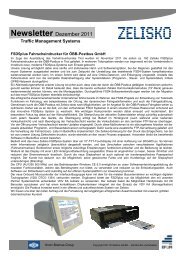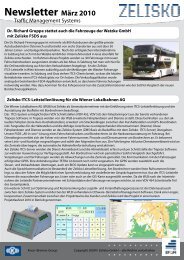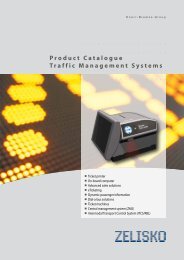Annual Report 2012 - Knorr-Bremse AG.
Annual Report 2012 - Knorr-Bremse AG.
Annual Report 2012 - Knorr-Bremse AG.
Create successful ePaper yourself
Turn your PDF publications into a flip-book with our unique Google optimized e-Paper software.
150<br />
Notes to the Consolidated Financial Statements<br />
1<br />
Principles and methods<br />
The consolidated financial statements have been drawn up in accordance with generally accepted<br />
accounting principles, complying with the accounting requirements of the German Commercial<br />
Code (HGB) and additional statutory provisions. Figures in the consolidated financial statements are<br />
shown in thousands of euros (TEUR). Certain items on the balance sheet and in the statement of income<br />
are combined for the sake of greater clarity. These items are explained separately in the Notes<br />
to the Consolidated Financial Statements.<br />
Accounting and valuation<br />
The financial statements of the companies included in the consolidated financial statements are<br />
prepared according to uniform principles of accounting and valuation applied to the Group. For the<br />
purposes of consolidation according to the equity method, any valuations in the financial statements<br />
of the associated companies that deviate from the uniform principles applied to the Group are<br />
retained.<br />
Purchased intangible assets are valued at acquisition cost less scheduled depreciation; additional<br />
depreciation is taken where necessary.<br />
Fixed assets are recorded at acquisition or production cost, less scheduled depreciation in the case of<br />
items subject to wear and tear; additional depreciation is taken where necessary. Depreciation on<br />
fixed assets is generally applied using the linear method, based on useful life. In the case of German<br />
companies included in consolidation, additions prior to January 2008 and after January 2009 are for<br />
the most part depreciated using the declining balance method, switching over to the linear method<br />
as soon as the latter results in higher depreciation. Minor fixed assets are depreciated to the maximum<br />
extent permissible under the respective countries’ tax provisions.<br />
Interests in affiliated, associated and related companies and miscellaneous investments are stated<br />
at cost or, in the event of a probable sustained diminution in value, at fair value (where the latter is<br />
lower).<br />
Materials and supplies are carried in inventories at the lower of average acquisition cost or replacement<br />
cost. Provision against realization risks is made where necessary.<br />
Work in process and finished products are stated at production cost, but in no case higher than the<br />
projected sales revenues less any costs accruing prior to sale. Production cost includes direct cost of<br />
materials and labor, as well as production overhead. A reasonable allowance is made where there is a<br />
risk of a decline in inventory values. Receivables are stated at their nominal value, less any necessary<br />
provisions against specific debts. Receivables bearing no or low interest are stated at their net present<br />
value. General charges have been made to cover the general credit risk.<br />
Other assets are stated at the lower of average acquisition cost, net present value or fair value.<br />
Earnings or disbursements prior to the balance sheet date are shown as prepaid income or prepaid<br />
expenses where they represent revenues or expenses for a certain period after the balance sheet<br />
date.



![1 Newsletter 2013 Version 0 92 [Kompatibilitätsmodus] - Zelisko](https://img.yumpu.com/50939577/1/184x260/1-newsletter-2013-version-0-92-kompatibilitaatsmodus-zelisko.jpg?quality=85)




![Backofficelösung ZMS [PDF, 740 kB] - Zelisko](https://img.yumpu.com/33964695/1/184x260/backofficelaasung-zms-pdf-740-kb-zelisko.jpg?quality=85)

![Geschäftsbericht 2012 [PDF, 13 MB] - Zelisko](https://img.yumpu.com/31517535/1/184x260/geschaaftsbericht-2012-pdf-13-mb-zelisko.jpg?quality=85)


![Produktkatalog Gesamtlösungen [PDF, 4 MB] - Zelisko](https://img.yumpu.com/22973479/1/182x260/produktkatalog-gesamtlaasungen-pdf-4-mb-zelisko.jpg?quality=85)
![ITCS Datenblatt [PDF, 804 kB] - Zelisko](https://img.yumpu.com/22855155/1/184x260/itcs-datenblatt-pdf-804-kb-zelisko.jpg?quality=85)
![Fahrscheindrucker FSD5plus [PDF, 934 kB] - Zelisko](https://img.yumpu.com/22822643/1/184x260/fahrscheindrucker-fsd5plus-pdf-934-kb-zelisko.jpg?quality=85)
